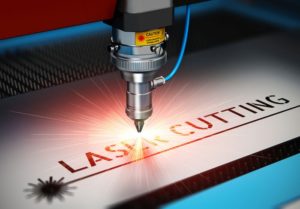Should We Choose CO2 or Fiber Technology?-Cathy

Should We Choose CO2 or Fiber Technology?-Cathy
Two types of lasers currently make up a majority of the industrial market: traditional CO2 gas lasers and newer solid-state fiber lasers. CO2 lasers have been the workhorses of the metal fabricating industry for the previous two decades. These lasers operate by running electricity through a gas-filled resonator (which includes CO2) and using mirrors to focus and deliver the beam. In a fiber laser, banks of diodes are used to create the laser. And it is channeled and amplified through fiber-optic cable, similar to that used in the telecommunication industry.
The fiber laser, which made its debut around 2008, has lower operating costs and delivers higher cutting speeds than the CO2 laser. Early on the fiber technology could cut at these higher speeds only on thin materials. But with the advent of more powerful lasers, fiber lasers are demonstrating robust cutting speeds even in 0.5-in.-thick material. As a result, fiber lasers tend to be a popular choice, despite their higher price.
Also, fiber technology may open new opportunities for a fabricator. These machines can cut reflective material, such as brass and copper, whereas it is difficult for CO2 lasers.
Some applications still remain better suited to CO2 lasers. Such as applications that require good edge quality on thicker or specialized materials. Also, some manufacturers may feel comfortable with CO2technology because they’ve used it for several years. And the company has in-house maintenance expertise.
After the end of the warranty period, keep in mind that you will have to make a decision about ongoing maintenance. Are you comfortable relying primarily on the OEM for service. Or do you like to be self-sufficient, perhaps relying on a third-party source for any maintenance? Because the fiber laser has fewer moving parts or mirrors when it comes to laser generating, unlike a conventional CO2 resonator. It will require less maintenance over its lifetime.
Will We Need Material Handling?
Choosing some level of automatic material handling equipment also is an important consideration. This is even more important today, primarily because of the significantly faster cutting speeds of the fiber laser technology.
That’s why it’s necessary to understand just how you will use this new laser cutting capability. Do you plan to run the laser only a few hours each day or multiple shifts? Based on the typical time to process a sheet of material, can your operator keep up with manually loading and unloading the laser. Even if it has a second shuttle table? How important is minimizing the labor cost in the part production to making a profit and remaining competitive in your business?
Sometimes metal fabricators choose not to buy material handling automation immediately. If you choose this route, should ensure can add the pallet systems or even an automated storage and retrieval tower easily in the future.

